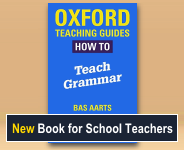Glossary: base form
Explanation
The basic form of a word to which inflections can be added to make other forms. E.g. clap is the base form of a verb, and is the starting point for making other forms such as clapped, clapping. This term is often used interchangeably with root word.Englicious contains many resources for English language in schools, but the vast majority of them require you to register and log in first. For more information, see What is Englicious?

